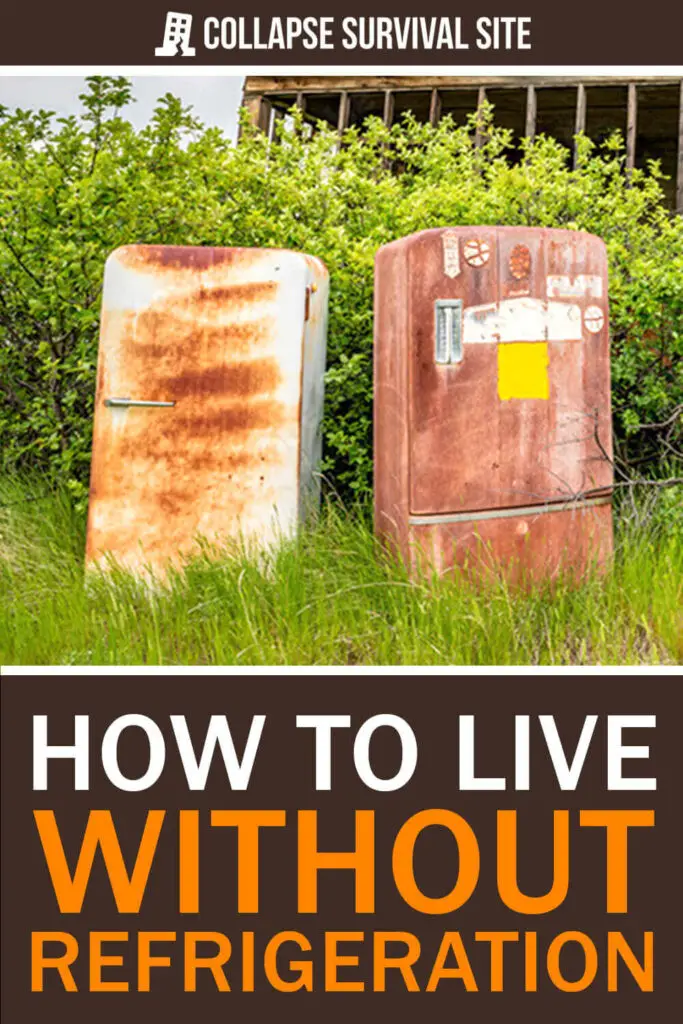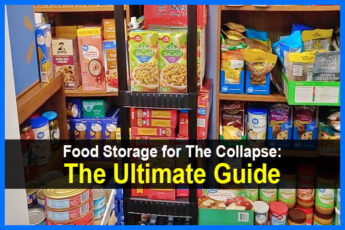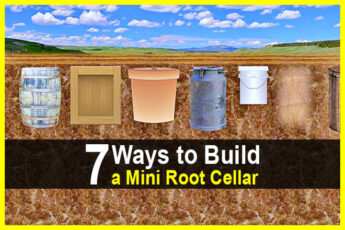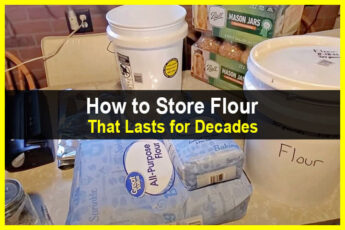Estimated reading time: 8 minutes
Convenience and the modern use of energy are so ingrained into our brains and bones that 72 hours after losing power, I was still waking up in the morning and reaching for light switches or the button on the countertop coffee maker.
Idiot, I would think to myself as I tried to turn something on but then I took a look around my kitchen. There was a microwave, coffee maker, stove, refrigerator, and freezer. This is probably how most kitchens look and a thought crept into my brain. Not only are we set up to only live with power, but at this point, most of us don’t know how to live without power.
While this applies to many functions throughout a home, I think it’s most clear in the kitchen, especially when it comes to preserving food. There are various short-term and long-term reasons that you could find yourself without power and refrigeration. Things like severe weather, natural disasters, fuel shortages, high fuel prices, deteriorating infrastructure, war, or a total societal collapse just to name a few.
Regardless of the reasons, you can take comfort in the fact that you don’t need refrigeration to preserve food. How do I know? Because humans have been doing so for a long time. So, let’s get into some of the things you need to know to be better prepared when it comes to living without refrigeration.
Want to save this post for later? Click Here to Pin It On Pinterest!
What Makes Food Go Bad?
Generally speaking, three things help to spoil food. Air, moisture, and temperature. These three components help things like bacteria and fungi to grow, which is what ultimately causes food to spoil.
This is why many emergency foods are freeze-dried and or vacuumed sealed in Mylar bags with oxygen absorbers and then stored in cool dark locations.
However, you don’t have to eliminate all three of these components but in fact, can use one or more of them to your advantage to preserve food.
Food Preservation Methods
Dehydration
Dehydration is the process of using low temperatures over long periods to remove as much moisture as possible from a food item. A low moisture content means it's more difficult for things like bacteria to grow.
This method is primarily used for meats, fruits, and vegetables and is usually done in an oven or a countertop dehydrator. But you can do it outdoors and overall the process is simple and doesn’t require any special equipment. Simply cut the food into the thinnest possible slices and hang them on a rack in warm conditions where they will receive direct sunlight.
The amount of time this will take depends on the size of the pieces of food, moisture content, and temperatures, but you can expect a minimum of eight to twelve hours of dry time. The goal is to get the food dry enough that you can snap it in half or crumble it.
Check out the video below on how to build your own dehydrator that doesn’t use any electricity.
Smoking
Like dehydration, smoking can use relatively low heat over many hours to preserve food or it can use higher temperatures. The smoking process can add flavor to food but the main purpose is to dry it out, which inhibits unwanted organism growth.
There are two basic types of smoking, cold smoking, and hot smoking. Cold smoking uses low temperatures whereas hot smoking uses higher temperatures to actually cook the food. The amount of time it takes to smoke a food item depends on the type and size of the food. Small pieces will take less time whereas whole chunks of meat will take much longer.
Below is a video on how to set up an easy smoking tent.
Canning
Canning food at home is very similar to how manufactured canned goods are made and it's one of the best ways to have ready-to-eat food with a long shelf life. The overall process goes something like this. Cooked food is placed into a glass jar or food is cooked in the jar and through the pressure-cooking method or the boiling method, a vacuum seal is created with a lid.
Which method of canning you choose depends on what type of food item you are wanting to preserve and the great thing about canning is that there are a ton of different recipes that can be used for meats, vegetables, and fruits.
After the canning process is done, the sealed jars should be stored in a cool, dry, and dark location out of direct sunlight. When stored in this manner, home canned goods can have an increased shelf life of a few months to years.
Check out the video below for a more in-depth look at how to get started with canning.
Curing
Curing meat or vegetables is a process that can add flavoring to food but the overall goal is to get the moisture out of the food by using salt on it. Curing is primarily used on meats and there are two main types of process. A wet rub and a dry rub.
Wet rubs involve exposing the meat to a brine solution that actually enters the meat. A dry rub simply consists of rubbing salt on the outside of the meat and allowing it to dry out for many days.
Check out the video below on how to cure meat.
Use Nature
Another great way to preserve food is to use what nature provides. If you live in an area where the temperatures remain cool or it is wintertime, you can create an outdoor structure, icebox, or even a cooler to store food in. Cool water sources, such as a cold spring, are another area where food can be stored.
Digging or building root cellars down into the ground or into the side of a hill is another way that you can keep food cool without any power. These cellars can be as small or as large as you want and in the short video below you can see a very inexpensive and easy way to make your own root cellar in a very short amount of time by using a metal trash can.
Preparing Foods That Don’t Need Refrigeration
Another option for living refrigeration is to learn to cook or bake foods that won’t require refrigeration afterward. Two prime examples immediately jump to mind, pemmican, and hardtack.
Pemmican is a Native American recipe that combines dried, powdered meat with liquid tallow.
The base recipe is only meat and tallow but other recipes can include nuts and dried fruits. This creates a very high-calorie meat that can last for months or even years without refrigeration and is convenient to carry. Below is a great video on how to make it.
Hardtack is another great food to make because it is so simple and it lasts virtually forever. It consists of three common ingredients, water, flour, and salt. A dough is made from this mixture and the dough is then used to create bars or biscuits. The biscuits are then placed into an oven to thoroughly dry out for up to a couple of hours, depending on their size.
For a more detailed look into how to make hardtack, check out the video below by Townsends.
True to its name, a hardtack biscuit is as hard as a rock when it comes out of the oven. The extremely low moisture and salt content within allows the biscuits to remain unspoiled for decades. There is even an account of hardtack being found over one years after the American Civil War that was still deemed edible!
Change The Way You Eat And Cook
I don’t know about you but I have not always been the greatest at judging how to cook just enough food. When I want spaghetti, I make the whole box. When I want stew, I make a whole crock pot of it. This is because I like leftovers and I don’t have a problem
with chowing down on them throughout the week. The problem with leftovers is that it usually means needing refrigeration.
Refrigeration can be taken out of this equation by learning how to cook just enough food for each meal or enough food that will be consumed within a reasonable time before it goes bad.
Another option is to change your diet as the seasons change and to consume local foods. By eating what is in abundance during the season, you won’t need to keep nearly as much food preserved.
Here are some great resources for learning how to preserve food without refrigeration, find food, and prepare it.
- A Guide to Canning, Freezing, Curing & Smoking Meat, Fish & Game
- Ball Complete Book of Home Preserving
- Midwest Foraging: 115 Wild and Flavorful Edibles from Burdock to Wild Peach
Bonus Food Option
I wanted to leave you with a little bonus food item that you can make at home and it won’t require any refrigeration. Ever heard of portable soup? Check out the video below to find out what it is how to make it.
Like this post? Don't Forget to Pin It On Pinterest!








